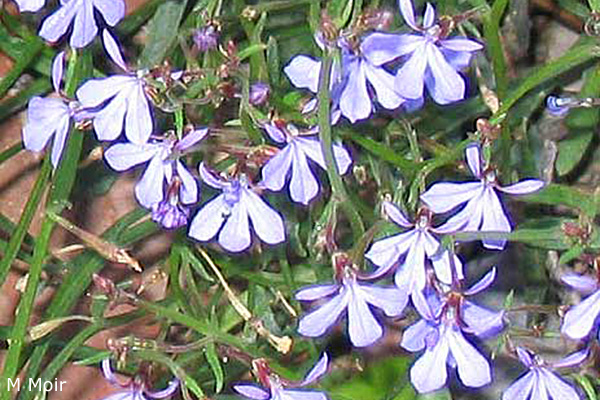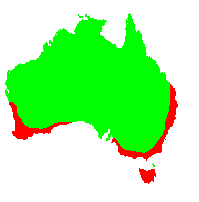General Description:
Lobelia is a genus of over 300 species found in many parts of the world, especially tropical and subtropical regions of North America, southern Africa and Australia. There are about 20 species native to Australia, ocurring in all states. All but one (Lobelia alata) are endemic to Australia. Lobelias are usually annual or perennial herbs, often with a milky sap. Cultivars of some exotic species are popular garden annuals.
Lobelia anceps (formerly Lobelia alata) is a small perennial herb with a trailing habit but sometimes erect to about 0.3 metres high. The leaves are narrowly elliptical to about 6 cm long, angled or winged at the base. The small blue to mauve flowers are about 75 mm long and are two-lipped; the upper lip comprising two lobes and the lower lip comprising three lobes. Flowering usually occurs in summer and autumn but sporadic flowering may also occur at other times.
This is a useful and hardy plant for cultivation in sheltered locations which are preferably frost free. The species will tolerate dense shade. Soils should be moist but not waterlogged. L.anceps will sometimes develop roots along its branches and, in conditions that suit, the plant can spread to other parts of the garden – this may or may not be desirable.
Propagation can be carried out from seed which germinates well, without treatment, after storage in the dark for about 2 months. The seed has an in-built dormancy which is easily overcome by storage prior to sowing. When ripe the dried capsules release seed quickly and it is worthwhile to tie a paper bag over the flowering stem when close to maturity, to ensure that the seed does not escape. Germination should occur in 7-14 days. Cuttings of firm, current seasons growth are also successful.

Lobelia anceps
Photo: Margaret Moir
 Australian Native Plants Society (Australia)
Australian Native Plants Society (Australia)